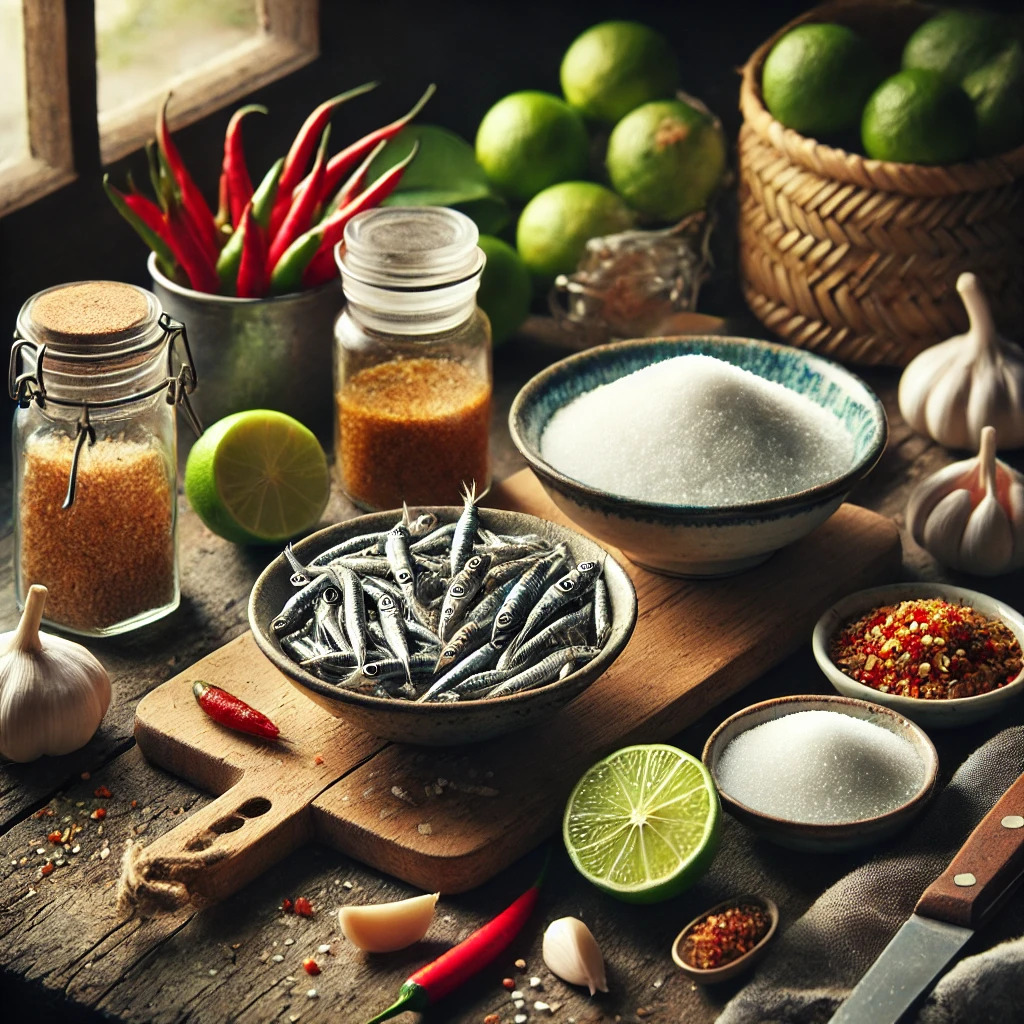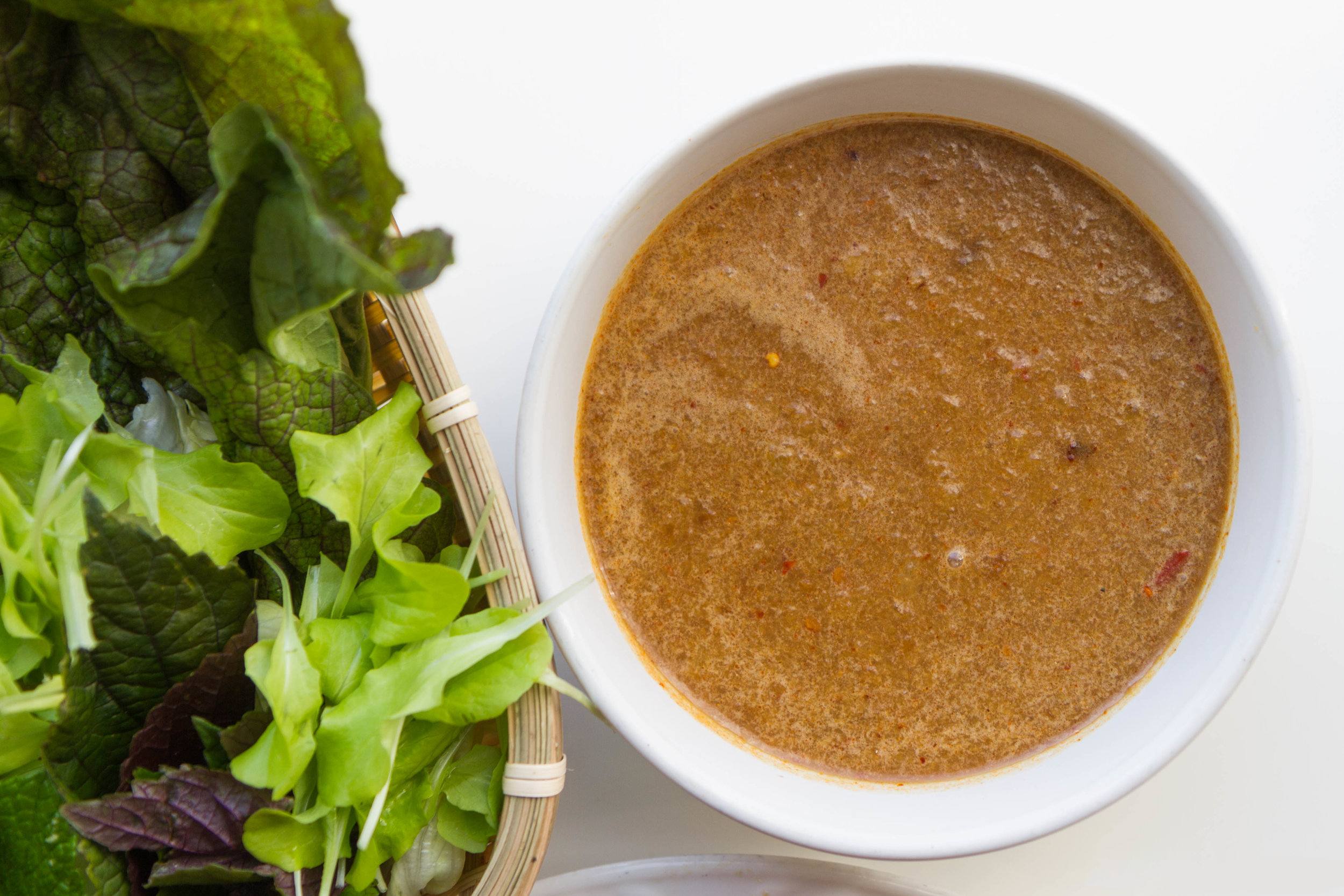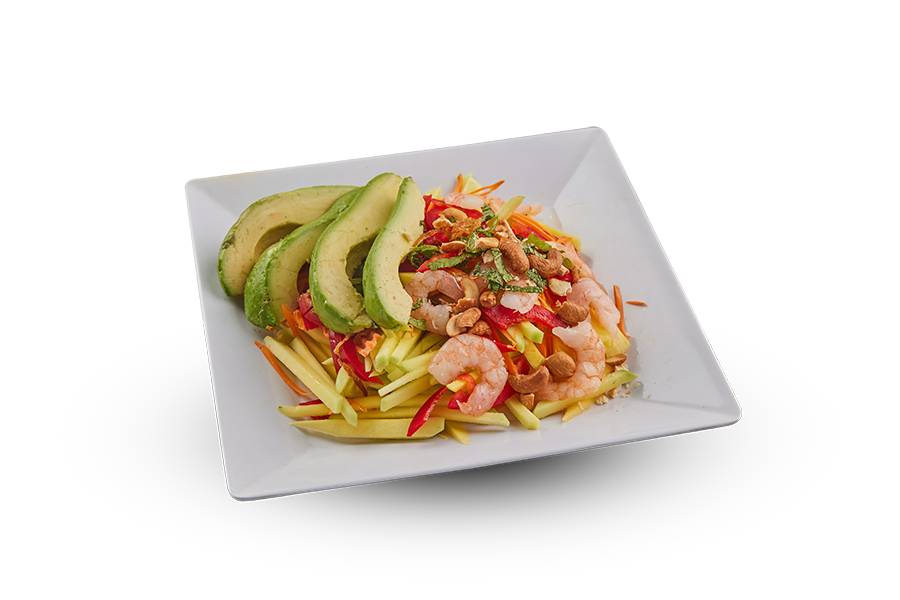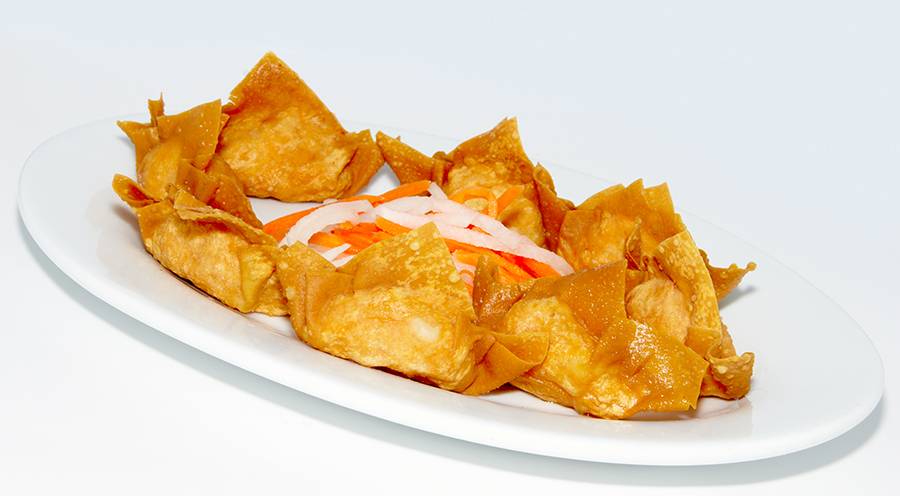What is Mắm Nêm?
Mắm Nêm is a traditional Vietnamese sauce made from fermented anchovies and salt. Unlike the more widely known nước mắm (fish sauce), which is also made from fermented fish, Mắm Nêm is thicker, darker, and has a much stronger, more concentrated flavour. It's often mixed with other ingredients like sugar, lime juice, garlic, and chilli to create a dipping sauce that pairs beautifully with dishes such as bún thịt nướng (grilled pork with vermicelli noodles), bánh xèo (Vietnamese pancakes), and various seafood dishes.
The Cultural Significance of Mắm Nêm
Mắm Nêm is deeply rooted in Vietnamese culinary traditions, particularly in central Vietnam, where it is a staple in many households. The process of fermenting fish to create sauces like Mắm Nêm dates back centuries and reflects the resourcefulness of Vietnamese people in preserving food and enhancing its flavour. The robust and savoury taste of Mắm Nêm is an acquired taste for many, but for those who grew up with it, the sauce is a beloved and indispensable part of their diet.
Ingredients for Making Mắm Nêm
To make a simple version of Mắm Nêm at home, you'll need the following ingredients:
- Fermented Anchovies (Mắm Nêm Base): 1 cup. You can find this in jars or bottles at Asian grocery stores. It's typically labelled "Mắm Nêm" or "Fermented Anchovy Sauce."
- Sugar: 2 tablespoons. This helps balance the strong, salty flavour of the anchovies.
- Garlic: 3 cloves, minced. Fresh garlic adds a sharp, aromatic quality to the sauce.
- Lime Juice: 2 tablespoons. Lime juice adds acidity, which brightens the flavour of the sauce.
- Fresh Chili Peppers: 1-2, minced. Adjust according to your spice preference.
- Pineapple (optional): ½ cup, finely chopped or blended. Pineapple adds a touch of sweetness and complexity to the sauce.
- Water: ¼ cup. This helps to dilute the sauce to the desired consistency.
Step-by-Step Guide to Making Mắm Nêm
Step 1: Preparing the Ingredients
Before making the sauce, ensure all your ingredients are prepped and ready to go. Mince the garlic and chilli peppers finely. If you're using pineapple, you can finely chop it or blend it into a puree, depending on your texture preference.
Step 2: Mixing the Base Ingredients
Combine the fermented anchovies with the minced garlic and chilli peppers in a medium-sized bowl. Stir well to ensure the garlic and chilli are evenly distributed throughout the anchovy base.
Step 3: Balancing the Flavors
Add the sugar to the mixture and stir until it dissolves. The sugar helps to mellow out the intense saltiness of the fermented anchovies, creating a more balanced flavour profile.
Next, add the lime juice, adding a bright, tangy note to the sauce. Lime juice is crucial in cutting through the richness of the fermented anchovies and creating a more rounded flavour.
If you're using pineapple, add it at this stage. The pineapple's sweetness and slight acidity complement the other ingredients beautifully, adding a layer of complexity to the sauce.
Step 4: Adjusting the Consistency
At this point, the Mắm Nêm will be pretty thick and concentrated. To achieve the desired consistency, gradually add water and stir continuously. The amount of water you use will depend on how thick or thin you want the sauce to be. Traditional Mắm Nêm is usually thicker, but you can adjust it according to your preference.
Step 5: Taste and Adjust
Once all the ingredients are combined, taste the sauce. Mắm Nêm should be a harmonious blend of salty, sweet, spicy, and tangy flavours. If it's too salty, you can add a bit more sugar or lime juice. If it's too sweet, add a little more fermented anchovy base or a pinch of salt. The key here is to balance the flavours to suit your taste.
Step 6: Serving the Mắm Nêm
Mắm Nêm is best served fresh, as the sauce's flavours are most vibrant when freshly made. However, it can be stored in an airtight container in the refrigerator for up to a week. Before serving, stir well, as the ingredients may settle over time.

How to Use Mắm Nêm
Mắm Nêm is incredibly versatile and can be used as a dipping sauce, marinade, or salad dressing. Here are a few ways to enjoy this robust sauce:
- Dipping Sauce: Serve Mắm Nêm as a dipping sauce for grilled meats, fresh spring rolls, or steamed vegetables. Its intense flavour pairs particularly well with rich, fatty meats like pork belly.
- Marinade: Use Mắm Nêm as a fish, chicken, or pork marinade. The fermentation adds depth of flavour to the meat, making it more savoury and aromatic.
- Salad Dressing: Mắm Nêm can be used as a bold dressing for salads, especially those featuring herbs and vegetables. Combine it with more lime juice and sugar to create a balanced, tangy dressing.
- Enhancing Noodle Dishes: Add a spoonful of Mắm Nêm to noodle dishes like bún thịt nướng or bún bò Huế to improve their flavour. The sauce adds an umami kick that takes these dishes to the next level.
Tips for Making the Best Mắm Nêm
- Start with Quality Ingredients: The quality of your fermented anchovies will significantly impact the final flavour of your Mắm Nêm. Look for a high-quality Mắm Nêm base at Asian grocery stores or specialty markets.
- Balance the Flavors: Mắm Nêm is all about balance. Don't be afraid to adjust the sugar, lime juice, and chilli to suit your taste. The key is to achieve a harmonious blend of salty, sweet, spicy, and tangy flavours.
- Experiment with Additions: While the traditional recipe is simple, you can experiment with different ingredients to create your version of Mắm Nêm. For example, add finely chopped herbs like cilantro or mint for a fresh twist.
- Serve Fresh: Mắm Nêm is best enjoyed fresh, but it can be stored for a few days in the refrigerator. If you're making it beforehand, stir it well before serving to redistribute the ingredients.
- Adjust for Spice: The spice level in Mắm Nêm can be adjusted based on your preference. If you prefer a milder sauce, use fewer chilli peppers or remove the seeds before mincing them.
Pairing Mắm Nêm with Vietnamese Dishes
Mắm Nêm's strong flavour makes it an ideal pairing with certain Vietnamese dishes. Here are some classic combinations:
- Bún Thịt Nướng (Grilled Pork with Vermicelli Noodles): Mắm Nêm is often served alongside grilled pork and vermicelli noodles, where it acts as a bold dipping sauce that enhances the savoury flavours of the grilled meat.
- Bánh Xèo (Vietnamese Pancakes): These crispy, savoury pancakes are often dipped in Mắm Nêm to add an extra layer of flavour. The intense, umami-rich sauce complements the crunch of the pancake and the freshness of the accompanying herbs and vegetables.
- Bún Bò Huế (Spicy Beef Noodle Soup): A spoonful of Mắm Nêm can be added to this spicy, aromatic soup to deepen its flavour and add a hint of fermented richness.
- Chả Cá Lã Vọng (Turmeric Fish with Dill): This northern Vietnamese specialty, featuring fish marinated in turmeric and dill, pairs beautifully with Mắm Nêm, which cuts through the richness of the fish and adds a complex, savoury note.
- Gỏi Cuốn (Fresh Spring Rolls): While peanut sauce is a more common pairing, Mắm Nêm offers a different flavour profile that complements the freshness of the ingredients in spring rolls, mainly when filled with shrimp or pork.
Understanding the Fermentation Process
Fermentation is the critical process behind Mắm Nêm, giving it its distinctive flavour and aroma. Here's a brief overview of how fermentation works and why it's essential for Mắm Nêm:
- The Role of Fermentation: Fermentation is a natural process where microorganisms like bacteria and yeast break down sugars and starches in food. In the case of Mắm Nêm, anchovies are fermented with salt over a period, which breaks down the fish and creates a rich, umami-packed sauce.
- Fermentation Time: The length of the fermentation process can vary, but it typically takes several months to achieve the desired flavour. The longer the fermentation, the more robust and more complex the flavour of the Mắm Nêm will be.
- Nutritional Benefits: Fermented foods like Mắm Nêm are rich in probiotics, beneficial bacteria supporting gut health. Additionally, the fermentation process can increase the availability of certain nutrients, making them more accessible for the body to absorb.
Storing and Preserving Mắm Nêm
Once you've made your Mắm Nêm, proper storage is critical to maintaining its flavour and freshness. Here's how to store and preserve your homemade Mắm Nêm:
- Refrigeration: Store Mắm Nêm in an airtight container in the refrigerator. It will keep for up to a week. Before using, stir well, as the ingredients may separate over time.
- Freezing: If you've made a large batch of Mắm Nêm, you can freeze portions for more extended storage. Use small, airtight containers or ice cube trays to freeze individual servings. Thaw in the refrigerator before use.
- Avoid Contamination: When storing Mắm Nêm, use clean utensils to prevent contamination. Introducing other food particles into the sauce can cause it to spoil more quickly.
Conclusion: Embracing the Bold Flavors of Mắm Nêm
Mắm Nêm is a sauce that embodies Vietnamese cuisine's bold, adventurous spirit. Its robust and complex flavour may be an acquired taste for some, but for those who appreciate the depth and richness that fermentation can bring, Mắm Nêm is a culinary treasure. Following this step-by-step guide, you can create your own Mắm Nêm at home, exploring the unique flavours of Vietnam's fermented anchovy sauce and elevating your Vietnamese cooking to new heights.
Whether served as a dipping sauce, marinade, or dressing, Mắm Nêm adds a distinctive, savoury touch to any dish. With a bit of practice and a willingness to experiment with flavours, you can master the art of making Mắm Nêm and bring a taste of authentic Vietnamese cuisine to your table.
Here are some delicious food and drinks to try when ordering from PHO restaurants in Toronto:
House Special Beef Noodle Soup (Phở Đặc Biệt)
Shrimp and Chicken Pad Thai (Padthai Tôm Gà)
Deep Fried Spring Roll (Chả Giò)
Grilled Beef Roll (Bò Nướng Cuốn)
Mango Salad with Shrimp (Gỏi Xoài Tôm)
Rare Beef and Well-Done Beef (Phở Tái Nạm)






















